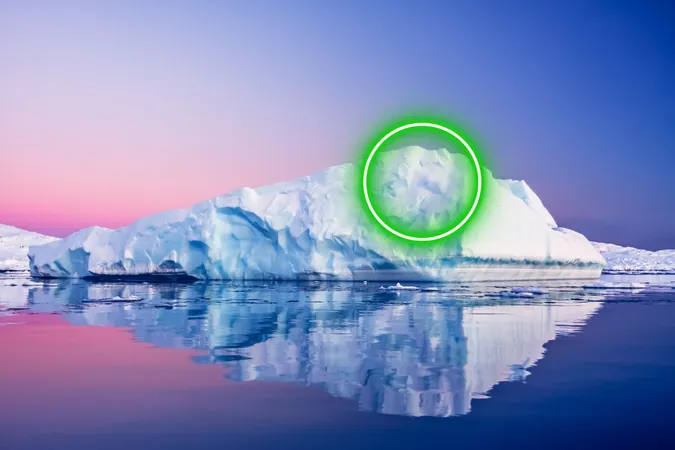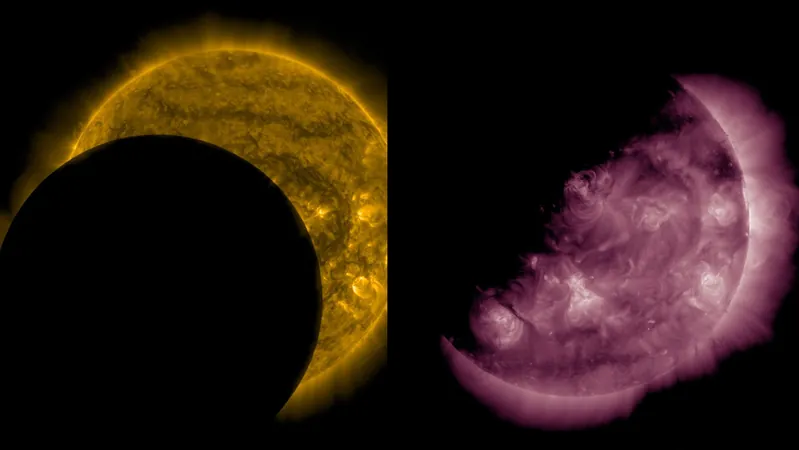
China's Chang'e-6 Mission Unveils Secrets of the Moon's Mysterious Far Side
2025-07-10
Author: Emily
Chang'e-6 Breaks New Ground in Lunar Research
In a groundbreaking achievement, the Chang'e-6 mission has shed light on the enigmatic far side of the Moon. Images taken by a mini rover, launched from the mission's lander, revealed the distinctive lunar landscape, marking a new chapter in our understanding of this hidden terrain.
Unlocking the Moon's Mysteries
Chinese researchers have shared groundbreaking findings from the samples collected by Chang'e-6, which include volcanic activity, ancient magnetic fields, and the geochemical properties of the Moon's mantle. This pioneering research, featuring contributions from the Institute of Geology and Geophysics (IGG) and Nanjing University, was unveiled in the prestigious journal Nature.
The Secret Lives of the Near and Far Sides
The Moon's near side, always visible from Earth, contrasts sharply with its far side, largely uncharted territory that has long piqued scientific curiosity. Researchers have noted stark differences in geological features, composition, and volcanic activity between the two sides, but the reasons behind these disparities remain largely unsolved.
Historic Sample Recovery from the South Pole-Aitken Basin
Chang'e-6 made history in 2024 when it returned 1,935.3 grams of lunar material from the South Pole-Aitken (SPA) Basin—the Moon's largest and oldest impact structure. This unexpected discovery is pivotal for understanding the differences between the lunar hemispheres and aims to decode the mystery of their uneven evolution.
Impact Catastrophe: A Game-Changer for Lunar Science
“The SPA Basin measures approximately 2,500 kilometers in diameter; the impact that created it was over a trillion times more powerful than an atomic bomb explosion,” explained Wu Fuyuan, a leading scientist at CAS. The four papers published reveal detailed effects of this monumental impact, signaling a transformed understanding of lunar geological history.
Unveiling Volcanic Activity and Ancient Magnetism
Among the notable findings, evidence suggests that the Moon's far side experienced volcanic activity between 4.2 and 2.8 billion years ago, lasting at least 1.4 billion years. Excitingly, researchers have also obtained ancient magnetic field data, hinting at intense fluctuations around 2.8 billion years ago. This implies dramatic changes in the Moon's magnetic environment, driving new inquiries.
Significant Differences in Water Content
A striking discovery revealed that the far side's mantle has far less water than the near side, suggesting major differences in water distribution between lunar hemispheres. Additionally, the mantle source from the SPA basin showed signs of depletion in elements crucial for revealing geological processes.
A Leap in Understanding Lunar Evolution
According to Li Chunlai, a key researcher, these findings represent humanity's first direct glimpse into the far side's deep interior properties. This novel information will aid our understanding of the Moon's layering and cooling processes. Moreover, it sets the stage for unraveling the mysteries behind the stark differences in characteristics between the Moon's two faces.
Revolutionizing Lunar Theories
Experts assert that the findings from Chang'e-6 are poised to challenge long-held theories in lunar science. Mahesh Anand from the Open University remarked, “These new revelations are forcing a reevaluation of established hypotheses.”
A Call to Action for Future Research
Vice President of CAS, He Hongping, emphasized the importance of ongoing research stimulated by these lunar samples. Meanwhile, Guan Feng, director of the Lunar Exploration and Space Engineering Center, highlighted the necessity for scientists to leverage the wealth of data available from China's lunar missions to drive further discoveries.
A Milestone in Lunar Exploration
Previously, the Chang'e-5 mission had already rewritten the timeline of lunar volcanic activity, providing crucial insights. The success of China's lunar exploration program exemplifies the seamless fusion of science and engineering, promising an exciting future for extraterrestrial research.









 Brasil (PT)
Brasil (PT)
 Canada (EN)
Canada (EN)
 Chile (ES)
Chile (ES)
 Česko (CS)
Česko (CS)
 대한민국 (KO)
대한민국 (KO)
 España (ES)
España (ES)
 France (FR)
France (FR)
 Hong Kong (EN)
Hong Kong (EN)
 Italia (IT)
Italia (IT)
 日本 (JA)
日本 (JA)
 Magyarország (HU)
Magyarország (HU)
 Norge (NO)
Norge (NO)
 Polska (PL)
Polska (PL)
 Schweiz (DE)
Schweiz (DE)
 Singapore (EN)
Singapore (EN)
 Sverige (SV)
Sverige (SV)
 Suomi (FI)
Suomi (FI)
 Türkiye (TR)
Türkiye (TR)
 الإمارات العربية المتحدة (AR)
الإمارات العربية المتحدة (AR)